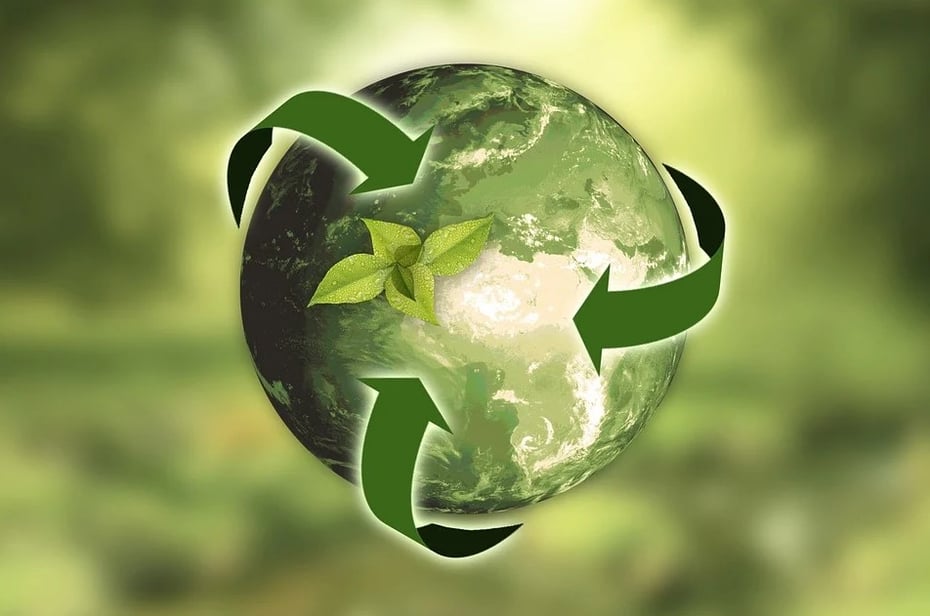The rules governing the disposal of Waste Electrical and Electronic Equipment are constantly updated, since environmental issues have great importance in the Italian and European political agendas. All EU member states, in fact, are required to make concrete actions to achieve the objectives of the so-called “Green New Deal” of the European Union, a program that establishes precise targets to be achieved in the 2020-2050 period, regarding several central issues for environmental protection (reduction of CO2 emissions, reduction of waste production, increase in the percentage of waste recycled, overall sustainability of industrial activities and so on).
The purpose of the Green New Deal is to promote, throughout Europe, the transition from a linear economy to a circular economy, in which the waste produced is not considered as waste, but it becomes the raw material for new processes, and this is why the rules relating to the correct treatment, recovery and recycling of all types of waste are constantly updated.
How WEEE is recycled: the main regulatory references
The rules regarding to the correct management of WEEE are contained in the Directive 2012/19/EU, implemented by Italy with Legislative Decree 49 of 14 March 2014. This decree, which entered into force on 12 April 2014 and is specifically dedicated to the treatment of WEEE, regulates the management of waste of electrical and electronic equipment throughout the national territory and “updates” the previous decree relating to this matter, Legislative Decree 151/2005.
The decree specifies the different definitions of WEEE, introducing among other things also photovoltaic panels among the electrical and electronic equipment covered by the legislation, and defines more clearly the difference between household WEEE and professional WEEE; subsequently, it clearly specifies that the treatment of WEEE must be carried out in such a way as to favor the re-use of raw materials and expresses some obligations that fall directly on producers (achievement of certain minimum recovery and recycling objectives, obligation to keep a register of WEEE collected , obligation to adhere to individual and collective collection systems …). Another important point is that related to the correct methods of collecting WEEE, which must be stored in special deposits at the distributors before being transported to the collection and treatment centers.
The decree, not only strictly regulates the technical and organizational aspects and defines administrative sanctions for those who do not comply with the provisions of the law, but also underlines the fundamental principles on which the rules relating to the correct disposal of WEEE are based on, namely:
- Reduce the environmental impact of WEEE, acting in a preventive way too, during the production of the appliances
- Encourage the reuse, the recycling and the recovery of WEEE, to use resources more effectively
- Oblige producers and distributors of electrical and electronic equipment to finance the WEEE recovery and recycling system.
All the innovations introduced with the “Circular Economy Package”
The latest innovations introduced in terms of WEEE treatment are included in Legislative Decree 118/2020, which together with other decrees relative to the management of different types of waste is part of the so-called “Circular Economy Package”.
The decree 118/2020, which entered into force on September 27th 2020, implements the European directive 2012/19/EU and modifies some aspects of the Legislative Decree 49/2014, introducing some innovations in particular regarding the treatment of the disused photovoltaic panels. In this regard, in fact, the decree states that “The financing of the management of WEEE deriving from photovoltaic EEE is at charge of the producers regardless of the date of placing on the market of said equipment and of domestic or professional origin”. The legislation also establishes that the Italian Ministry of the Environment has annually to transmit to the European Commission the data regarding to the quantity of electrical and electronic equipment placed on the market and the quantity of WEEE collected separately.
In the “Circular Economy Package” there are also other rules which, although not specifically concerning WEEE, apply to all hazardous waste and establish:
- The obligation to keep an electronic register (which replaces the old loading and unloading register) for the traceability of waste
- The obligation to properly store waste containing pollutants in temporary deposits, before sending them to treatment centers
- The obligation to send waste to disposal centers at least quarterly (regardless of the amount of waste collected) or in any case when the quantity in storage reaches 30 m3
- The obligation to group waste by homogeneous categories before sending it to the treatment centers, in compliance with the rules governing the storage of hazardous substances contained within them.
All these rules share the same purpose: to make the recycling, recovery and reuse of waste process – of WEEE in particular – more effective and safer, to protect the environment and human health and to enhance the raw materials present within them
Are you interested in the methods of WEEE disposal and you want to learn more about the legislation that regulates this matter? Download our guide!

